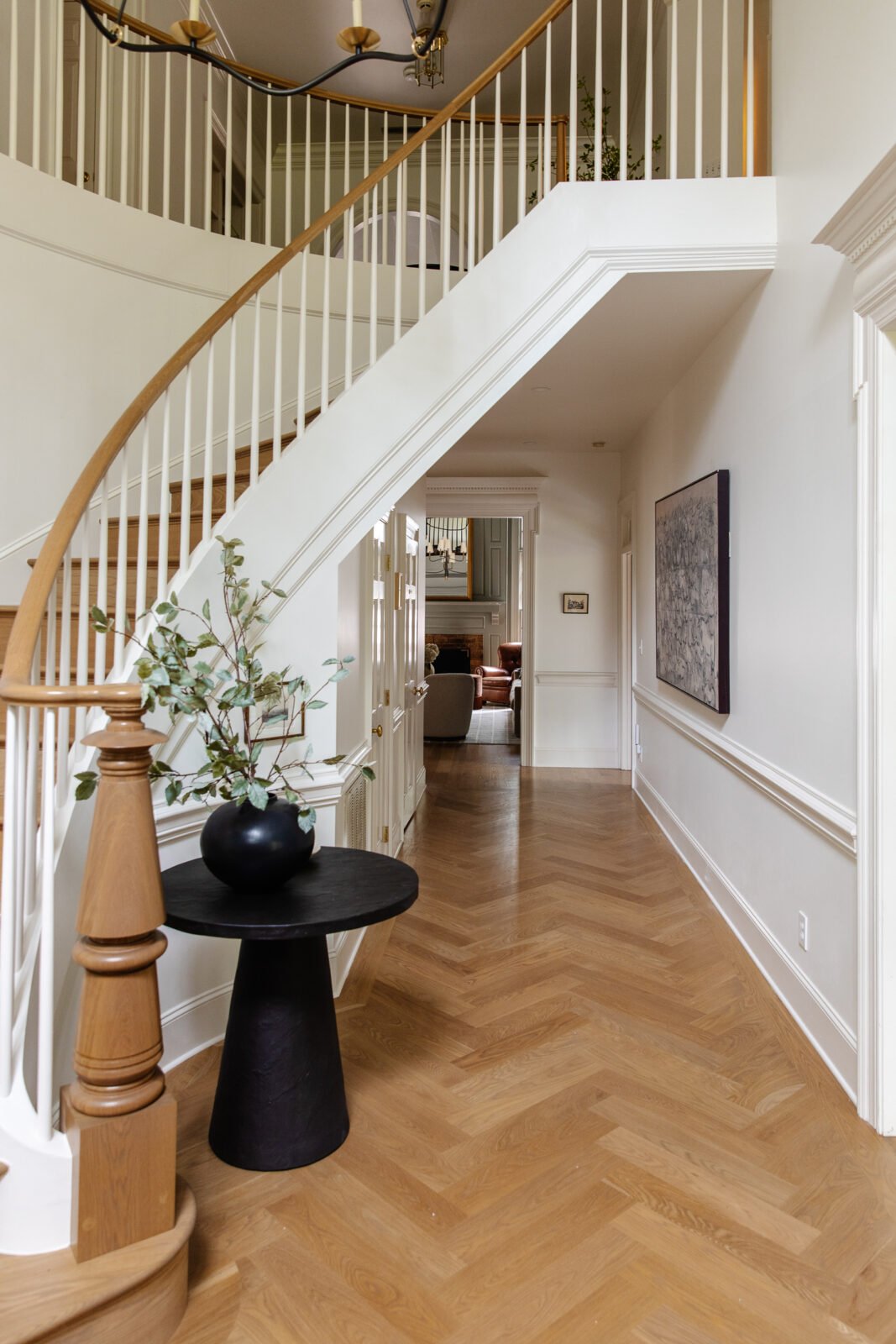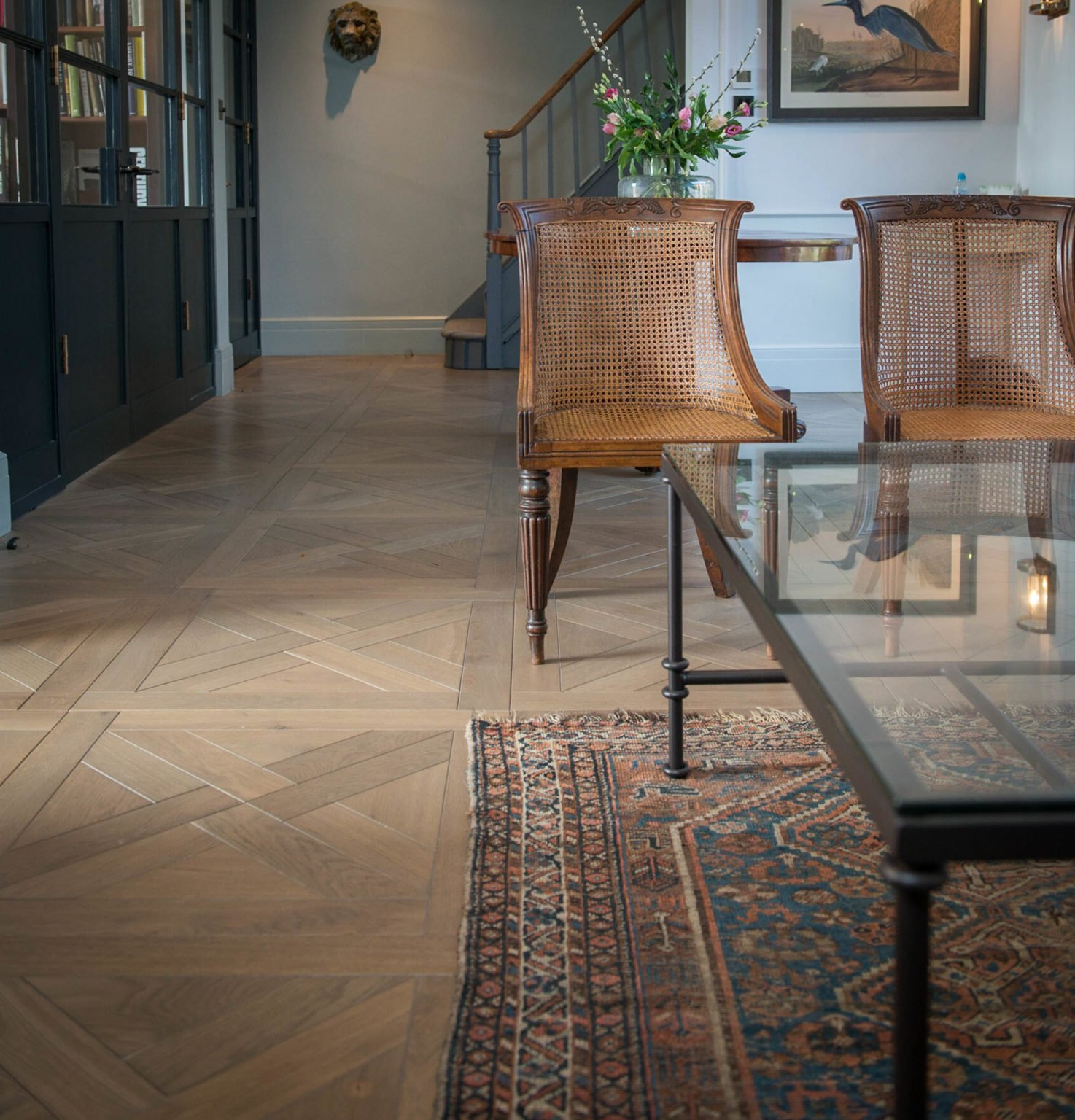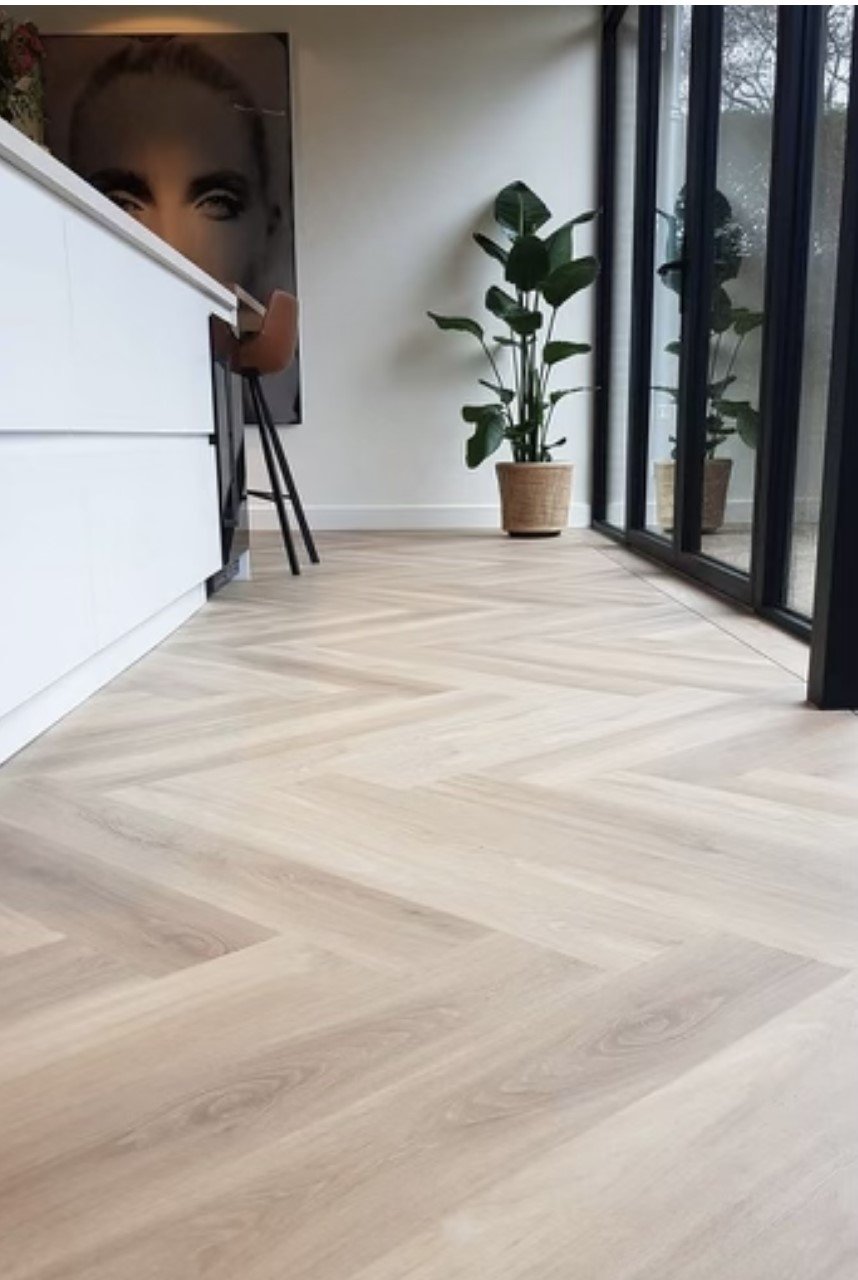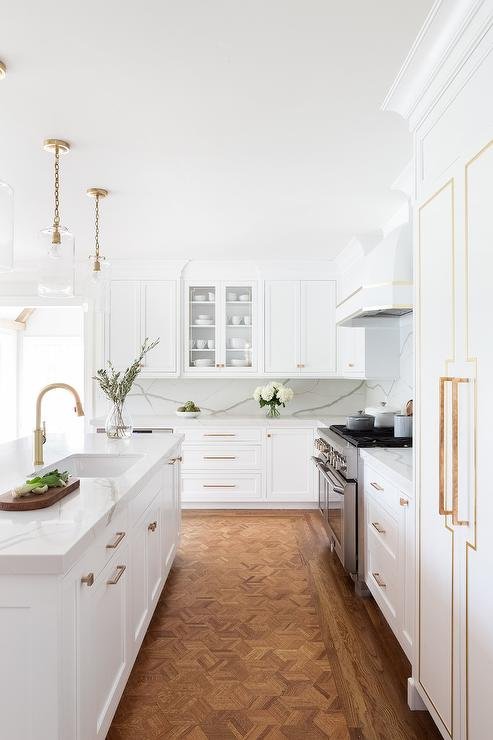Hardwood Flooring 101
Photo: Reclaimed French Solid Oak Floors by Jake Arnold Design
We think flooring is one of the most important overall decisions you’ll make when undertaking a renovation. From carpet to stone, the flooring options are endless, but our flooring of choice is always hardwood. Choosing hardwood and how to lay it can be a daunting task because there are so many options and not all hardwood is created equal! We thought we’d break it down for you by listing the most popular hardwood flooring choices and their pros and cons, to help you make your decision about flooring in your own home.
Solid Hardwood
Solid wood floors are made entirely of solid wood throughout, usually oak, walnut, or maple, and has a classic appeal that never goes out of style. We absolutely love the timeless beauty of solid wood and the warmth it adds to a space. The main advantages of solid hardwood is that it can be sanded and refinished repeatedly, it has a longer lifespan than most other options, it’s very durable, is best for resale value and is usually the most coveted. It’s often the most expensive option.
Photo: Solid white oak hardwood floors by Studio McGee
Engineered Wood
Engineered wood flooring looks very similar on the surface to solid hardwood, but is made from a thin layer of hardwood bonded over thin plywood. Engineered flooring is usually less expensive than solid hardwood, and can only be sanded and refinished once or twice since the surface hardwood layer is quite thin. These types of floors are better for heat and water resistance, they are easier to install, and are more environmentally friendly as they use less hardwood. Engineered wood flooring used to be much less desirable than solid hardwood, but they’ve come a long way and improvements in the product quality and design make them a great option.
Photo: Engineered wood floors by Kate Knowles Home
Vinyl and Laminate Flooring
Vinyl flooring can look just like wood. It’s often the least expensive option and is ideal for bathrooms, laundry rooms and mudrooms as it’s extremely resistant to moisture. Traditionally this option isn’t very sustainable however new vinyl products have recently been introduced that are made of stone. These are very strong, low maintenance, and are completely scratch resistant. They are also much thicker than traditional vinyl flooring, higher quality and look more like real wood. There is now vinyl products that are mold-resistant- perfect for a cabin or wherever you need a durable product that can take lots of wear and tear. These new vinyl options are quite expensive, some cost the same as real wood. But they look gorgeous and are definitely something to consider.
Whereas vinyl flooring is usually made from 100% synthetic material, laminate flooring has a core made from wood byproducts bonded with resins. Because of the wood products in laminate flooring, they aren’t recommended for spaces like bathrooms, mudrooms and laundry rooms as water can cause this flooring to swell. There is no repairing laminate floors- they must be entirely replaeed if damaged.
Photo: Luxury plank vinyl floors by Becki Owens/Stoneform
Wood Tile
Wood tile is made of ceramic or porcelain tile and is an affordable and sustainable flooring option that looks like wood. It’s a great choice for bathrooms and anywhere that humidity is a concern. We prefer porcelain for its durability. For the most realistic wood look, keep grout lines very thin. This flooring option can crack and chip, but is easy to replace if needed.
Photo: Topps Tiles by Lisa Sherry Interiors
Once you’ve chosen the type of wood flooring you want, you’ll need to choose how to lay it out. You can stick to a more traditional pattern, like a random staggered look, or go for something more unique. Below from top left, the patterns shown are: chevron, herringbone, basket weave, versailles, herringbone and hexagonal. Each pattern achieves a different look, from traditional to modern.











